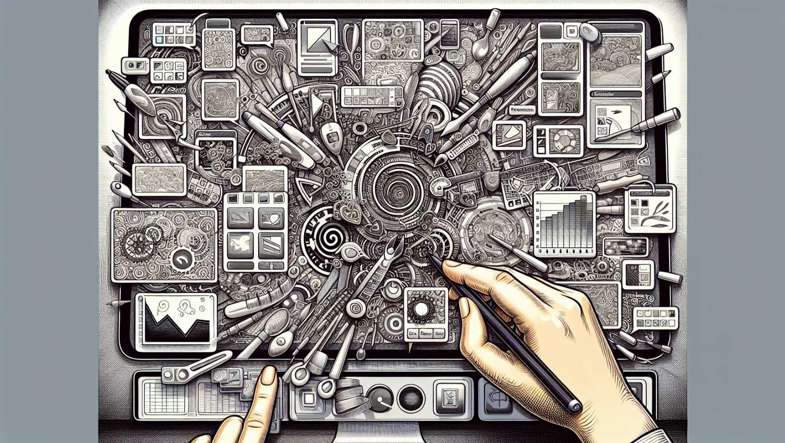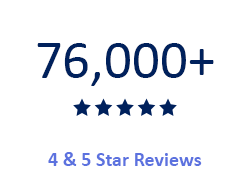
What are the Photoshop essentials you need to know to excel in design and photography? This article cuts through the complexity to deliver a focused guide on the key tools and features that will transform your Photoshop experience. Dive into essential techniques for image editing, layer management, and more as we simplify Photoshop for beginners and seasoned users alike.
Navigating the Adobe Photoshop Interface

Adobe Photoshop’s interface is highly customisable, conforming to the unique needs of each user. Whether you’re focusing on photo retouching or graphic design, the workspace can be adjusted to suit your project requirements. You can even modify the size of individual panels by hovering your mouse pointer over their boundaries, allowing you to tailor the layout to your preference.
As you navigate through different panels within Photoshop, remember that each can be expanded by clicking on it. This provides additional space for tools and options, making it easier to access the functionalities you need for your project. But remember, while having many panels open can be helpful, it can also clutter your workspace. So, ensure you have only the most essential panels open at any given time to maintain an efficient and streamlined workflow.
Fundamental Photoshop Tools and Their Uses

Photoshop offers a plethora of tools that designers can use to enhance their work. Take, for instance, the indispensable selection tools like the Marquee, Lasso, and Magic Wand. These tools allow designers to isolate and modify specific parts of their artwork with precision, making them invaluable in the design process.
In addition to selection tools, Photoshop is equipped with photo retouching tools such as the Healing Brush, Clone Stamp, and Content-Aware Fill. These tools enable designers to seamlessly remove blemishes and unwanted elements from images, ensuring a polished finish with the help of Photoshop elements.
Typography tools are another set of features that can significantly impact your design. With these tools, you can craft text that combines readability with visual harmony, enhancing the overall aesthetic of your design.
Layer Logic: Organising Your Photoshop Documents
Layers are the backbone of non-destructive editing in Photoshop, enabling designers to maintain the original image intact while applying edits. By using layers, you can:
-
Duplicate layers to create multiple versions of an image
-
Reorder layers to change the stacking order of elements
-
Link layers to group them together for easier editing
-
Unlink layers to make individual adjustments
-
Control the visibility of layers to show or hide specific elements
Using layers allows for independent manipulation and effective visibility control, making it easier to manage your project in an organised manner.
Layer masks are another powerful tool in Photoshop. These masks allow for precise control over the visibility of different areas within a layer, making them invaluable for blending and compositing. By understanding and implementing layer logic, you can create complex designs while maintaining the flexibility to make changes without affecting the original elements.
The Power of Adjustment Layers and Filters
Adjustment layers offer a powerful way to manipulate colour and tone without permanently modifying the underlying layers. With these layers, you can apply effects selectively to specific parts of an image using masks, providing a high level of control over your edits.
Photoshop offers a range of preset adjustments through adjustment layers, including:
-
Black and white conversion
-
Brightness
-
Contrast
-
Vibrance
-
Hue and saturation adjustments
These presets can dramatically alter the mood and tone of your image. And the best part? The effects of adjustment layers can be replicated across several images to ensure a consistent aesthetic.
When it comes to applying filters and effects, Photoshop has a lot to offer. From sharpening and blurring to distortion, these tools can enhance your images and add a touch of creativity. Additionally, understanding colour theory is crucial when using adjustment tools like Hue/Saturation, Curves, and Color Balance for colour corrections.
Saving and Exporting: Finalising Your Project
Once you’ve completed your design, it’s time to finalise your project. Merging layers can help reduce file size, but it’s crucial to do this after editing to preserve the flexibility of your design. Flattening, on the other hand, merges all visible layers, discards hidden ones, and fills in transparency, which can be useful when you’re preparing your file for export.
Photoshop offers tailored export options for different media. Here are some options you can use:
-
For web projects, you can use ‘Save for Web (Legacy)’ to maintain quality while reducing file size.
-
For print projects, high-quality formats like PSD and TIFF are recommended.
-
You can customise your exporting preferences regarding file format, quality, and destination, using the ‘Export As’ and ‘Export Preferences’ functions.
One of the noteworthy features of Photoshop is its ability to export from multiple artboards simultaneously. This feature, combined with the ‘Save for Web’ function, allows users to preview the final result before saving, ensuring your design appears as you intended.
Shortcuts and Tricks to Speed Up Your Workflow
Speed is often key in design, and mastering Photoshop’s keyboard shortcuts can significantly speed up your workflow. Predefined keyboard shortcuts for key editing functions like:
-
creating a new file (Ctrl + N/Cmd + N)
-
saving (Ctrl + S/Cmd + S)
-
undoing (Ctrl + Z/Cmd + Z)
-
free transforming (Ctrl + T/Cmd + T)
Utilising the download feature can save you valuable time, especially when you need to install various software through different windows.
Layer management can also be streamlined with shortcuts. Here are some useful shortcuts for managing layers in Photoshop:
-
Use Shift + Ctrl + N/Cmd + Shift + N for a new layer
-
Use Ctrl + J/Cmd + J for a new layer via copy
-
For precise positioning of elements, use the Move tool (V) combined with arrow keys
Beyond shortcuts, Photoshop’s automation features like Actions and batch processing can perform repetitive tasks on multiple images quickly, freeing up more time for creative work.
Customising Photoshop: Brushes, Patterns, and Shapes
 Customisation is a key aspect of Photoshop, allowing designers to create unique designs. You can create custom Photoshop brushes using either the Brush tool for digital creation or by scanning traditional media like ink and brush strokes.
Customisation is a key aspect of Photoshop, allowing designers to create unique designs. You can create custom Photoshop brushes using either the Brush tool for digital creation or by scanning traditional media like ink and brush strokes.
To generate detailed brushes that maintain quality when resized, it’s advisable to start on a larger canvas. Remember, images will be converted to black and white for brush patterns, and angles and spacing adjustments can be made within the Brushes panel.
Photoshop also comes with brush sets like:
-
Watercolor
-
Pencil
-
Splatter
-
Drip spray paint
-
Paint brushes
-
Photoshop brush
These provide designers with a diverse palette of texture options and styles, allowing you to achieve everything from realistic effects to energetic vibes and sophisticated looks using acrylic paint.
Advanced Techniques for Seasoned Users
As you become more comfortable with Photoshop, advanced techniques and features can further enhance your design capabilities. Advanced Photoshop tutorials, for example, can teach you to create effects like a coloured pencil or smoke look, manipulate portraits for splatter paint effects, and design promotional materials.
Photoshop scripts can dramatically increase your productivity by automating regular tasks such as document setup or batch image processing, allowing more time for creative work. Staying informed on the latest Photoshop features ensures that you can leverage new tools and updates to enhance your editing capabilities and maintain a competitive edge.
One such advanced feature is the ‘Blend If’ tool. This sophisticated tool allows seasoned users to create intricate masks and composite images in a highly controlled manner, perfect for complex photo editing tasks.
Beyond Basic Photoshop Editing
We hope this guide, coupled with Nexacu's training, empowers you to explore new techniques, speed up your workflow, and create more captivating designs. With practice, creativity, and the insights gained from Nexacu's Photoshop professionals, the possibilities with Photoshop are truly limitless.
Frequently Asked Questions
How can I customise the Photoshop interface?
To customise the Photoshop interface, create a new custom workspace and adjust the size of individual panels to suit your needs.
What are some fundamental Photoshop tools?
The fundamental Photoshop tools include selection tools like Marquee, Lasso, and Magic Wand, retouching tools like the Healing Brush, Clone Stamp, Content-Aware Fill, and typography tools. These are essential for various editing and design tasks.
How do layers work in Photoshop?
Layers in Photoshop work by enabling non-destructive editing and can be managed by duplicating, reordering, linking, or unlinking them. This allows for greater flexibility and control over the editing process.
What are adjustment layers and filters?
Adjustment layers enable you to modify colour and tone without altering the original layers, while filters provide a range of effects such as sharpening, blurring, and distortion. These tools are essential for non-destructive editing in image processing.
How can I save and export my Photoshop project?
You can merge layers to reduce file size and use the 'Export As' and 'Export Preferences' functions to customise your exporting preferences.
 phone
phone
 email
email
 enquiry
enquiry
























